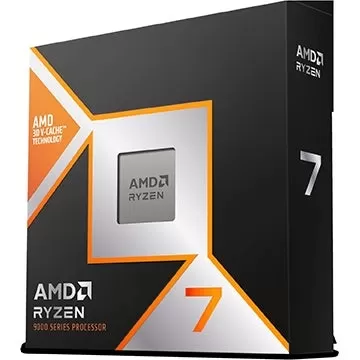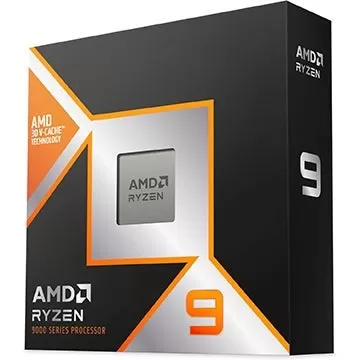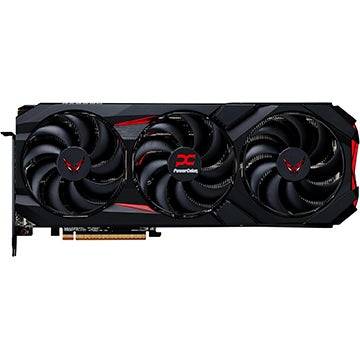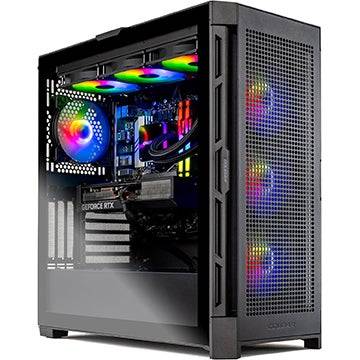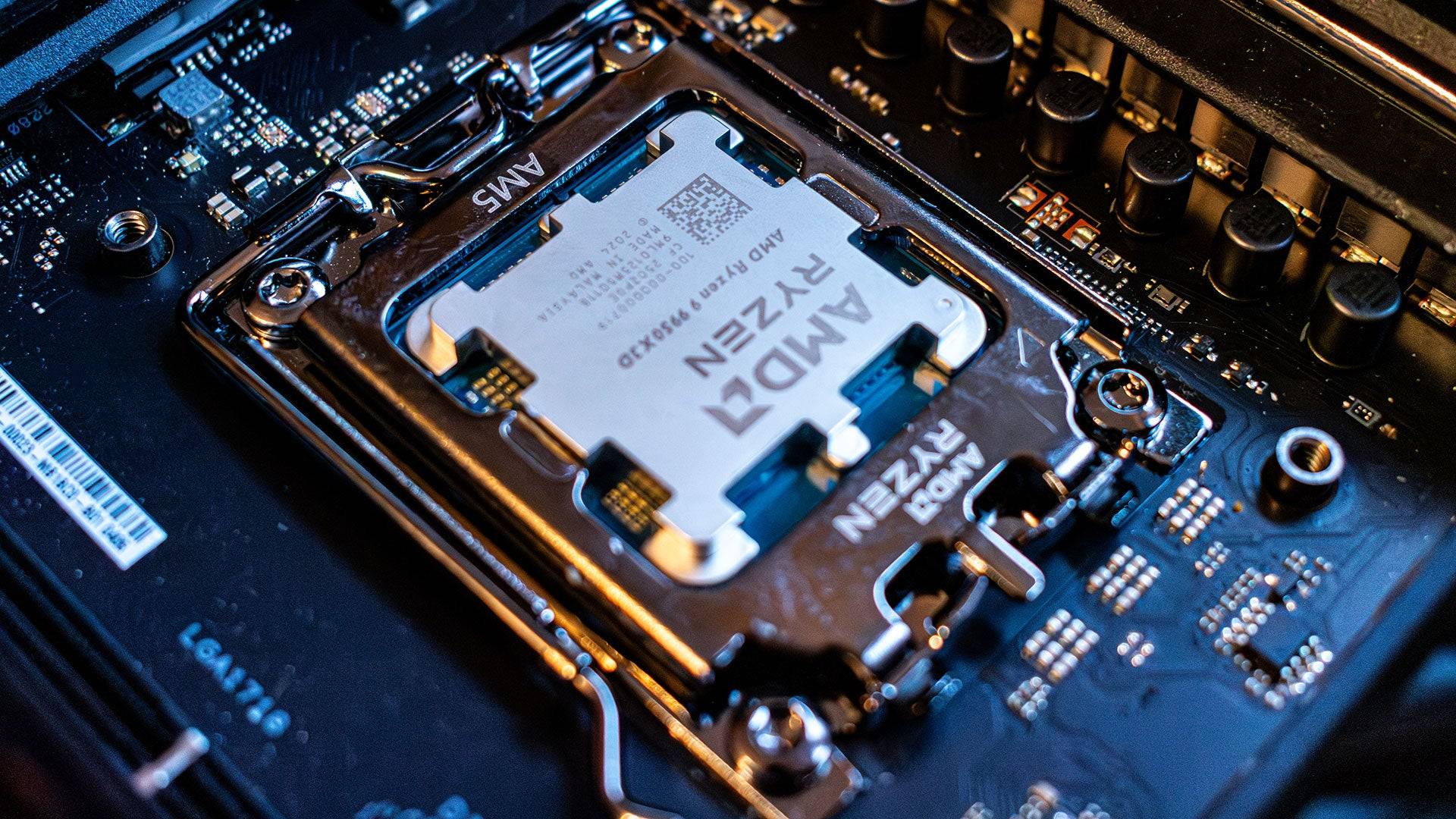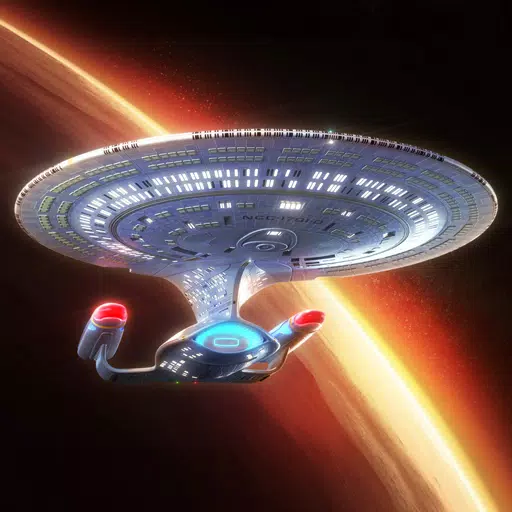The AMD Radeon RX 9070 enters the market at an intriguing time for graphics cards. Hot on the heels of Nvidia's latest generation release, this $549 card directly challenges the underwhelming GeForce RTX 5070. In this head-to-head, AMD's Radeon RX 9070 emerges as a clear winner, positioning itself as the go-to choice for 1440p gaming enthusiasts.
However, the situation is nuanced. AMD itself complicates the decision with its pricing strategy. The Radeon RX 9070 is only $50 less than the superior Radeon RX 9070 XT. Although the price difference aligns mathematically—the 9070 is approximately 8% slower and 9% cheaper than the 9070 XT—it's challenging to justify not spending the extra $50 for enhanced performance. Yet, when it comes to choosing between these two AMD options, the outlook remains promising for Team Red.
Purchasing Guide
----------------The AMD Radeon RX 9070 is set to launch on March 6, starting at $549. Be aware that higher-priced models will be available. My advice? Opt for a version as close to the starting price as possible, especially given its proximity in cost to the Radeon RX 9070 XT.
AMD Radeon RX 9070 – Photos
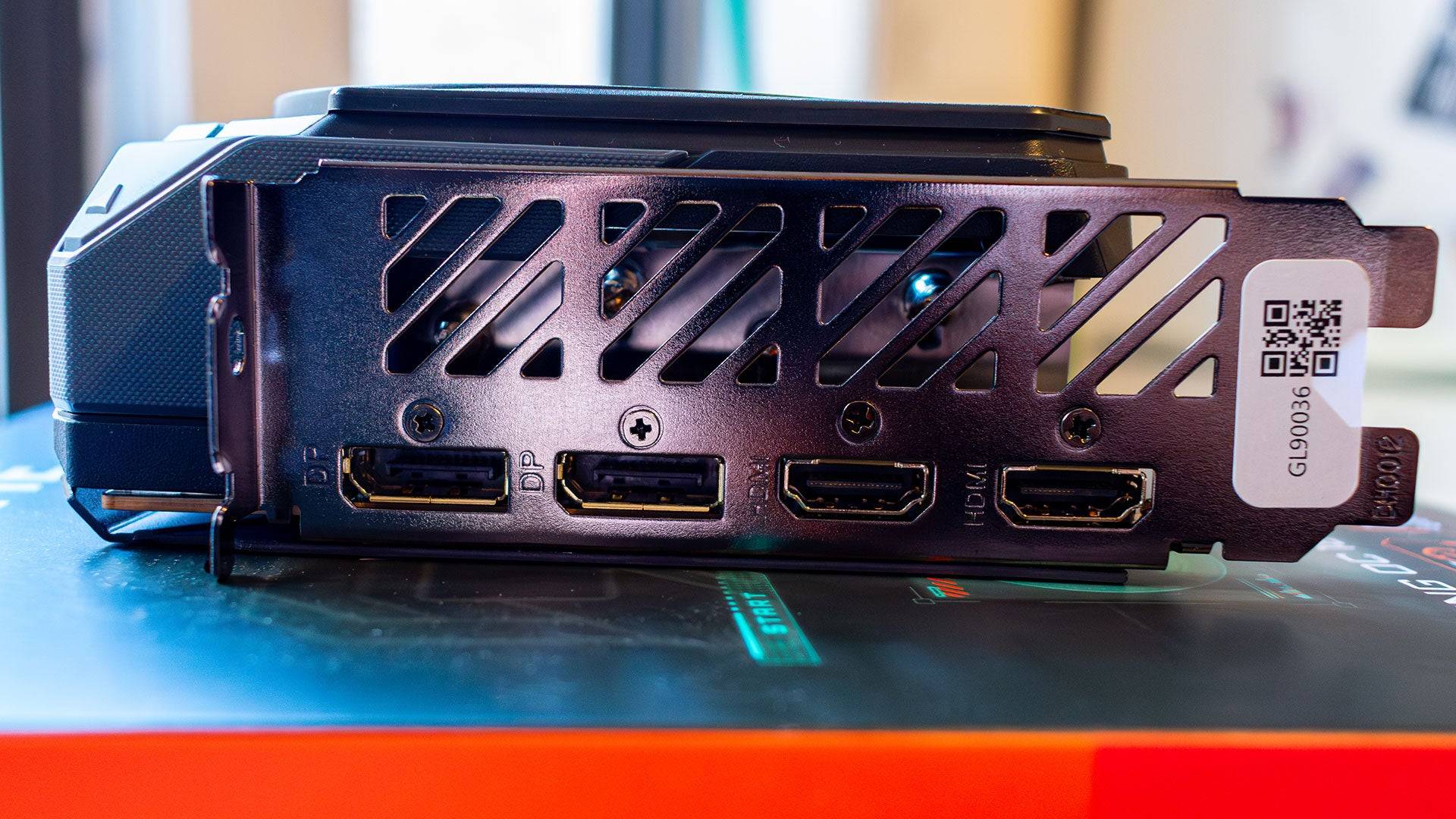
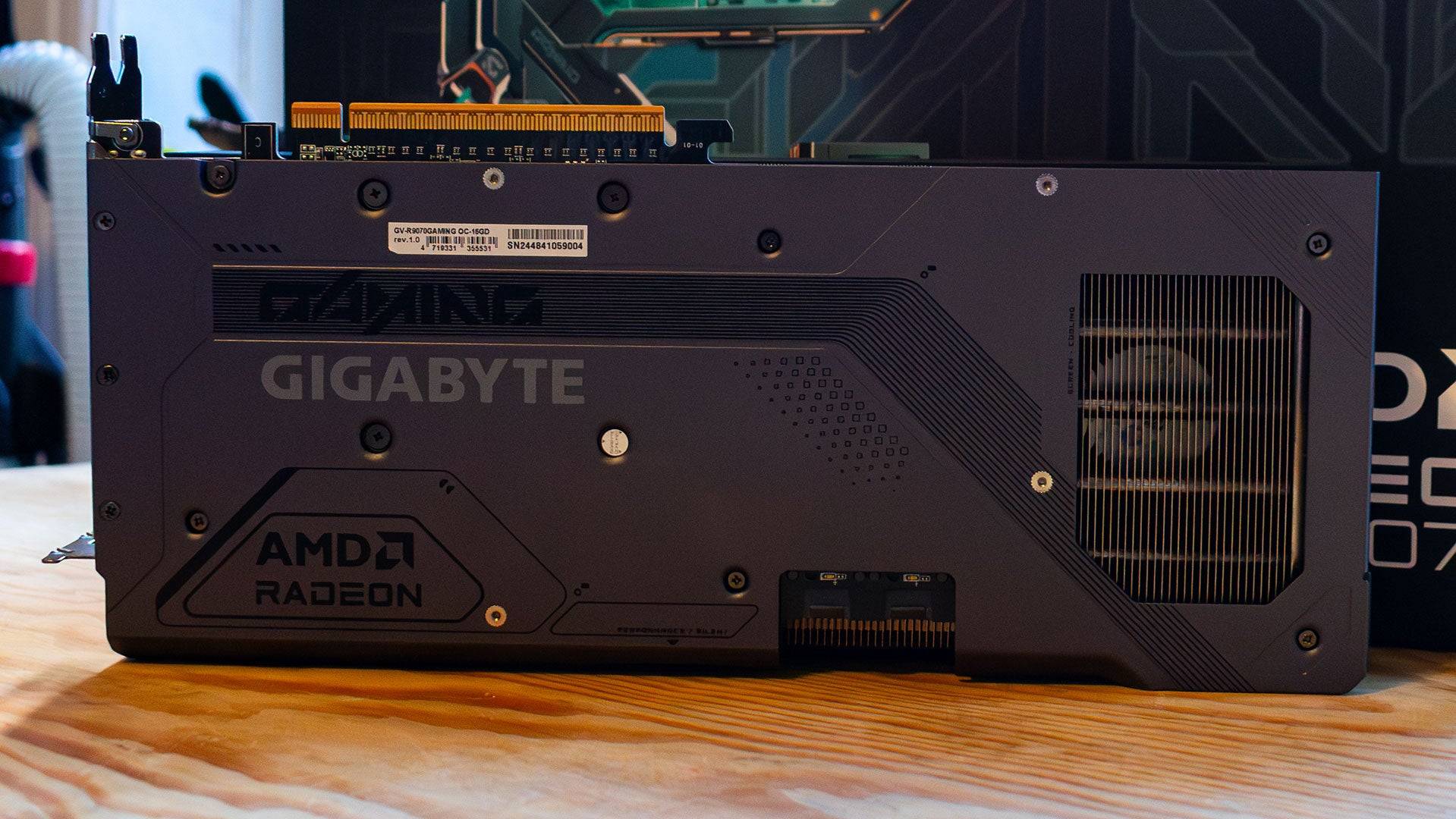 4 Images
4 Images
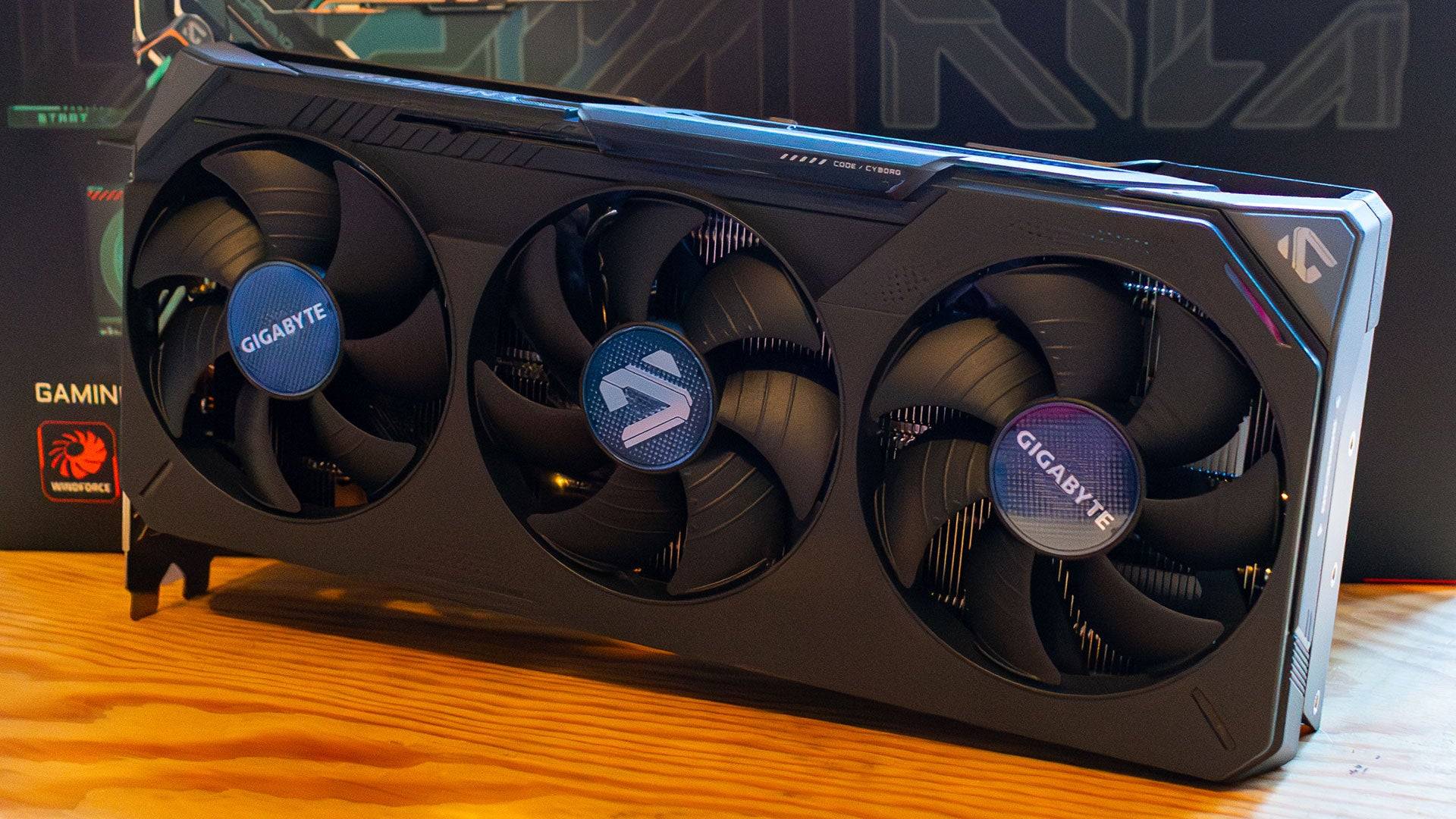
Specs and Features
------------------Like its sibling, the Radeon RX 9070 XT, the RX 9070 leverages the new RDNA 4 graphics architecture, bringing significant performance boosts. It outperforms the last-gen Radeon RX 7900 GRE by a wide margin, despite having 30% fewer compute units.
The Radeon RX 9070 boasts 56 Compute Units, each containing 64 Streaming Multiprocessors (SMs), totaling 3,584 shaders. Each compute unit also includes one Ray Accelerator and two AI Accelerators, summing up to 56 and 112, respectively. The enhanced Ray and AI Accelerators enable the card to excel in ray tracing and introduce AMD's FidelityFX Super Resolution (FSR) 4, marking the debut of AI upscaling on AMD GPUs.
Like the 9070 XT, the RX 9070 is equipped with 16GB of GDDR6 VRAM on a 256-bit bus, matching the 7900 GRE's memory setup, which is adequate for 1440p gaming for years to come. While GDDR7, used by Nvidia, would have been a nice upgrade, it likely would have increased the price.
AMD suggests a minimum 550W power supply for the RX 9070, which has a power budget of 220W. My testing showed a peak consumption of 249W, slightly over budget. To be safe, I recommend a 600W PSU.
It's worth noting that AMD isn't releasing a reference design for the RX 9070, marking a shift from recent generations. All versions will be produced by third-party board partners. I tested the Gigabyte Radeon RX 9070 Gaming OC 16G, a triple-slot card with a modest factory overclock.

FSR4
----Since the rise of DLSS in 2018, AI upscaling has been a game-changer for boosting performance while maintaining image quality. Traditionally an Nvidia-exclusive feature, FSR 4 now brings this technology to AMD GPUs.
FSR 4 uses previous frames and in-game data, processed through an AI model, to upscale lower resolution images to your native resolution. This approach differs from the temporal upscaling of FSR 3, which lacked an AI algorithm and could result in artifacts like ghosting.
The trade-off with FSR 4 is a slight performance dip due to the AI model's processing demands. For instance, in Call of Duty: Black Ops 6 at 1440p on the Extreme preset, FSR 3 delivered 165 fps, while FSR 4 dropped to 159 fps. Similarly, in Monster Hunter Wilds at 4K with ray tracing, the RX 9070 achieved 81 fps with FSR 3 and 76 fps with FSR 4.
Fortunately, the Adrenalin software includes a toggle to switch between FSR 3 and FSR 4, allowing you to prioritize either image quality or performance. As a single-player gamer, I'd opt for FSR 4, but for fast-paced online games like Marvel Rivals, FSR 3 might be preferable.
AMD Radeon RX 9070 XT & 9070 – Benchmarks

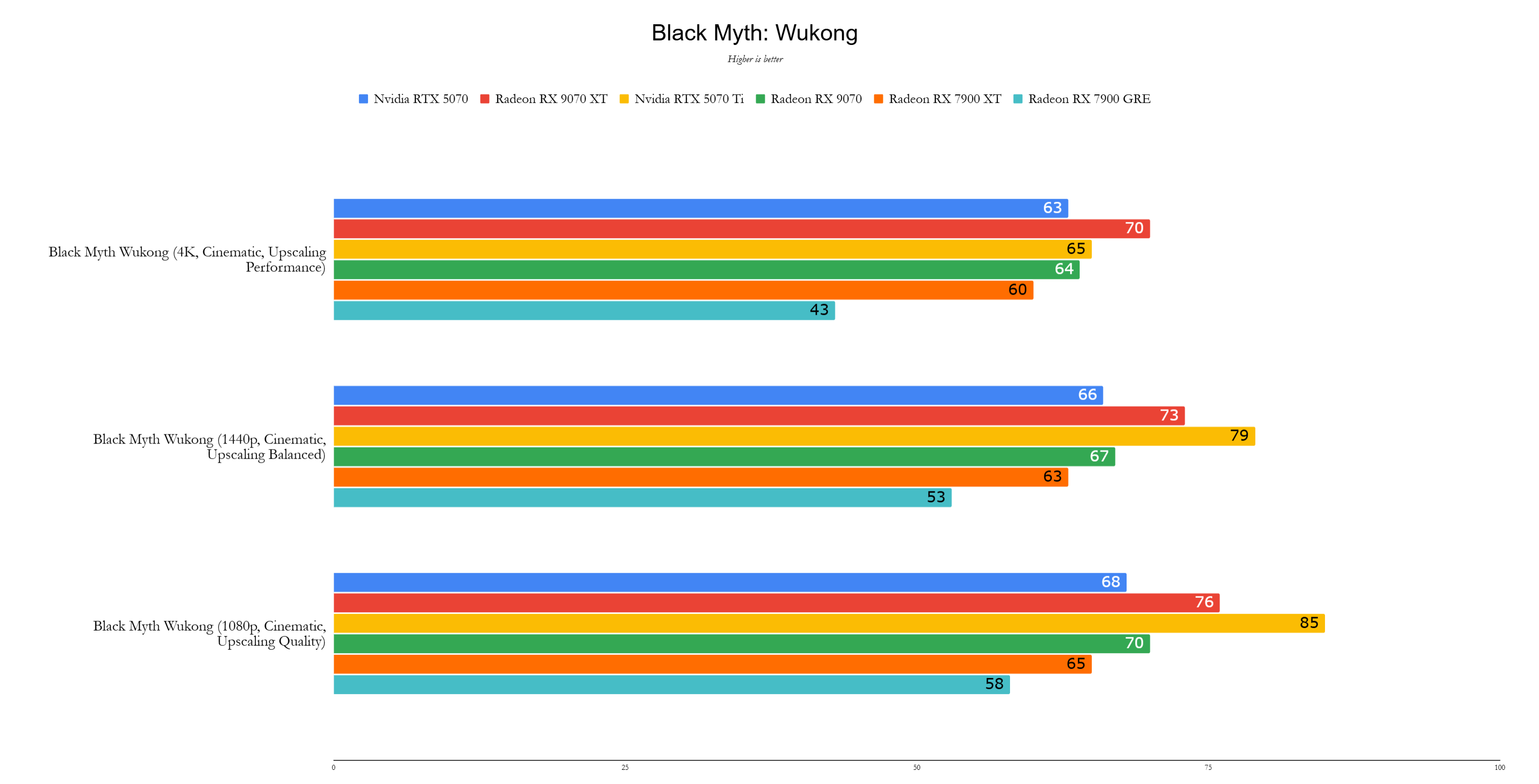 11 Images
11 Images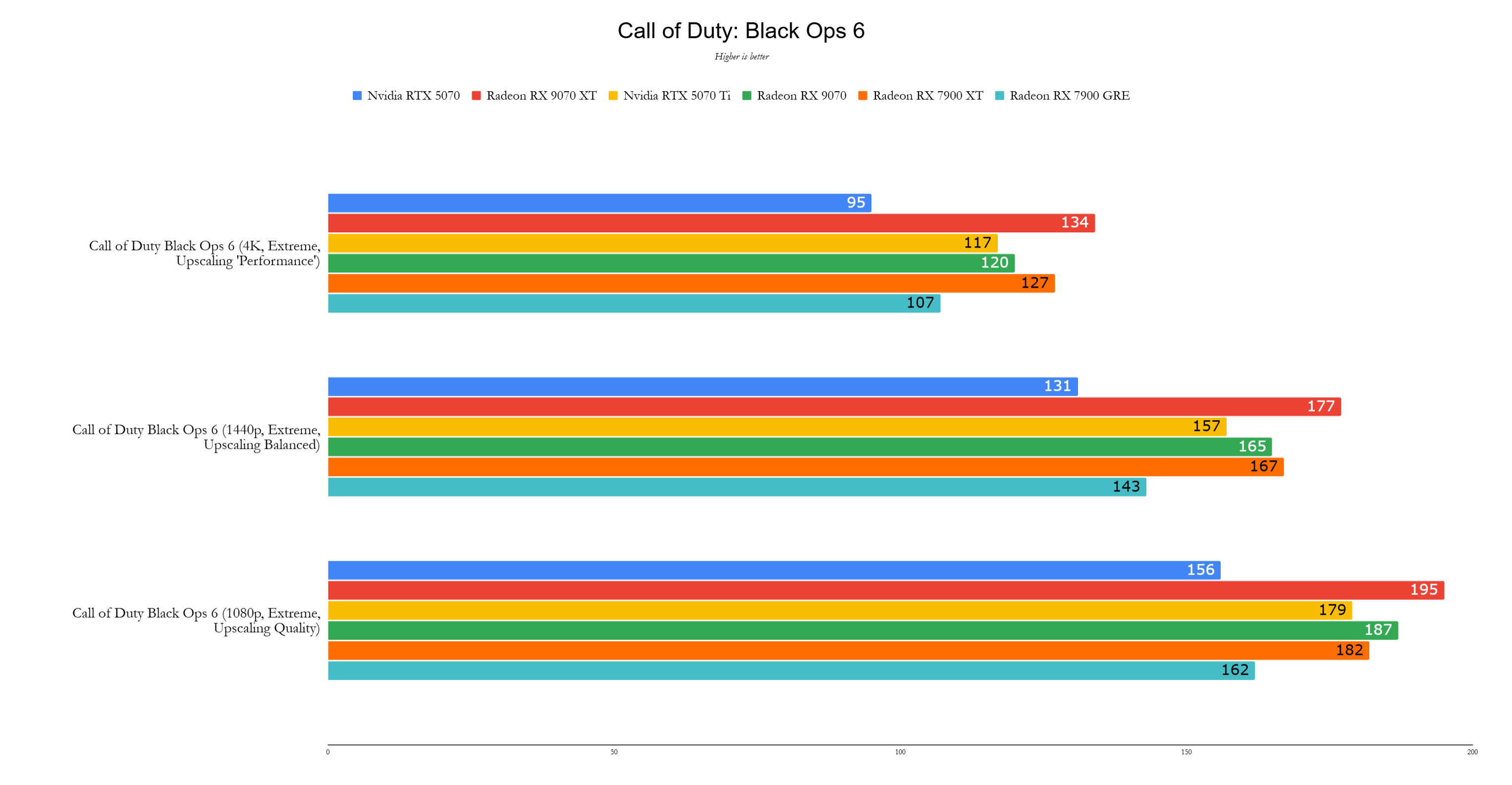

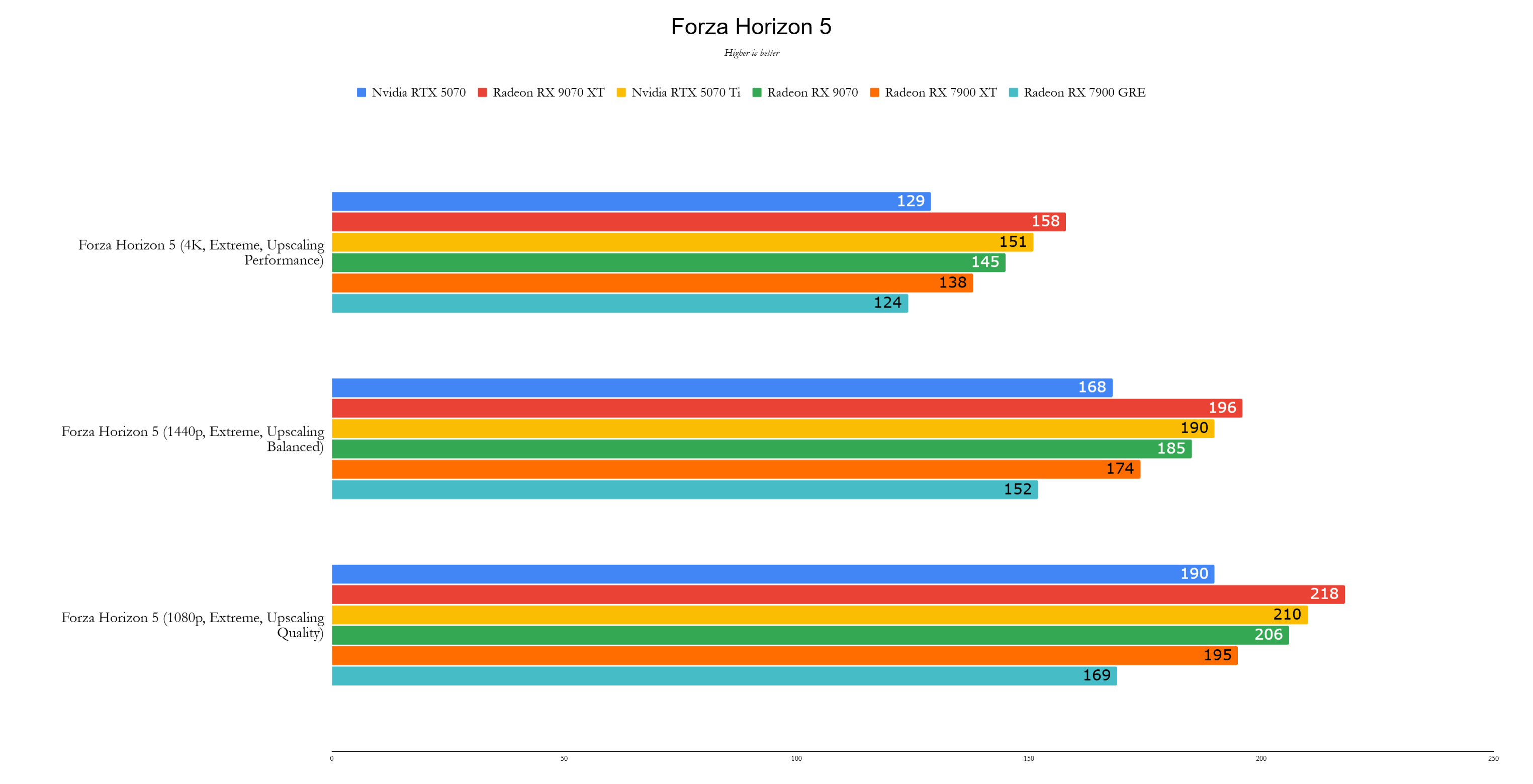
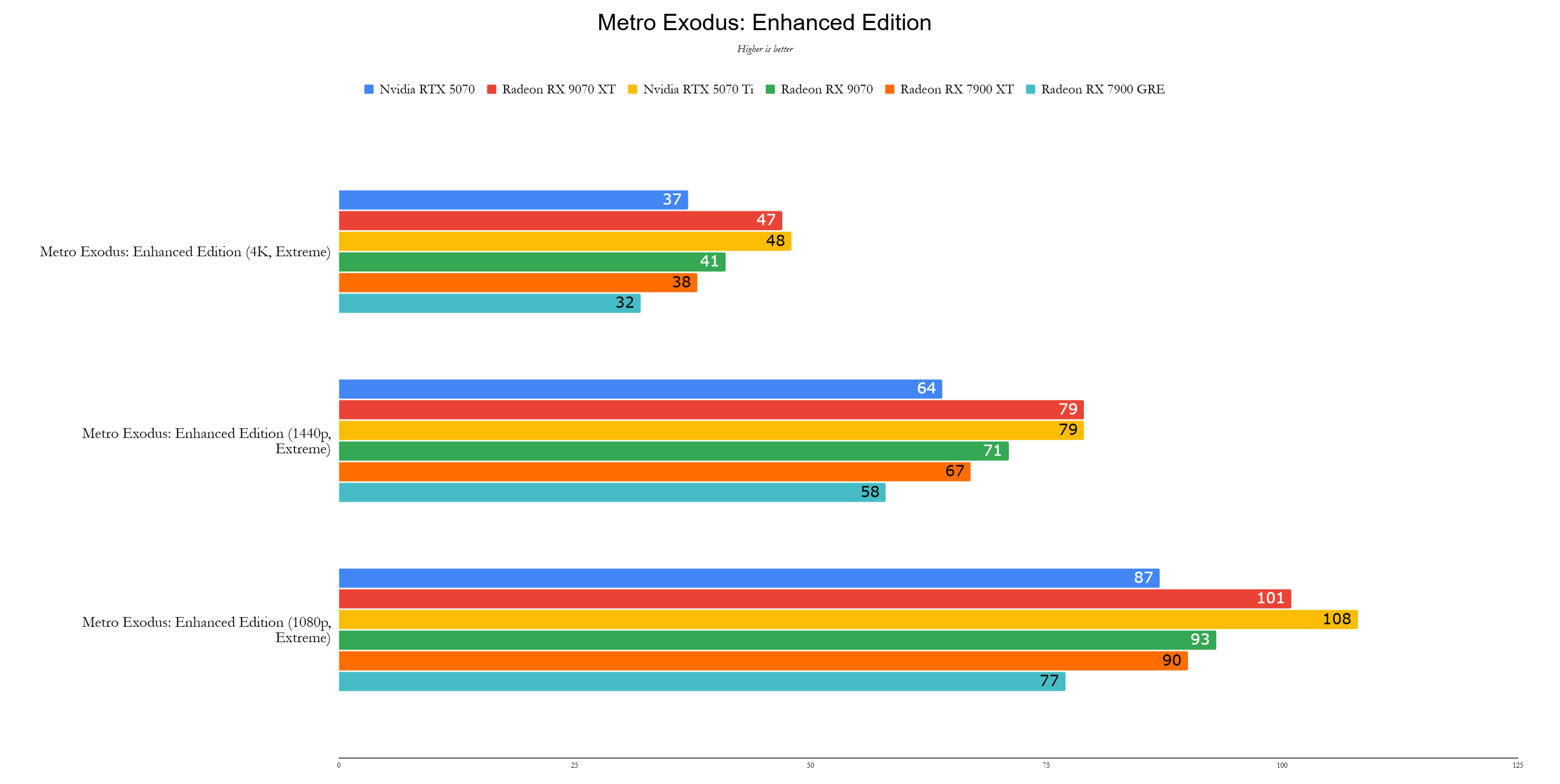
Performance
-----------Priced at $549, the AMD Radeon RX 9070 outpaces the Nvidia GeForce RTX 5070 in most scenarios. At 1440p, this mid-range GPU averages 12% faster than the RTX 5070 and boasts a 22% lead over its predecessor, the RX 7900 GRE, despite having 30% fewer cores.
It's important to note that I tested a factory overclocked version, the Gigabyte Radeon RX 9070 Gaming OC, with a boost clock of 2,700Mhz, approximately a 7% increase. This should translate to a 4-5% performance boost.
All graphics cards were tested using their latest public drivers at the time of writing: Nvidia cards on Game Ready driver 572.60, AMD cards on Adrenalin 24.12.1, with review drivers provided for the RX 9070, 9070 XT, and RTX 5070.
In 3DMark, the RX 9070 shows strong potential. In the Speed Way test with ray tracing, it scores 5,828 points, nearly matching the RTX 5070's 5,845. In the non-ray tracing Steel Nomad test, the RX 9070 significantly outperforms with 6,050 points to the RTX 5070's 5,034, a 20% difference at the same price.
Test System
CPU: AMD Ryzen 7 9800X3D Motherboard: Asus ROG Crosshair X870E Hero RAM: 32GB G.Skill Trident Z5 Neo @ 6,000MHz SSD: 4TB Samsung 990 Pro CPU Cooler: Asus ROG Ryujin III 360Call of Duty: Black Ops 6, showcased by AMD at CES 2025, sees the RX 9070 excel at 1440p with FSR 3 on Balanced, achieving 165 fps compared to 131 fps from the RTX 5070 and 143 fps from the 7900 GRE, a 26% and 15% lead, respectively.
Cyberpunk 2077, traditionally favoring Nvidia, sees the RX 9070 outperform the RTX 5070 by 3% at 1440p with Ray Tracing Ultra, a notable achievement for AMD.
In Metro Exodus, tested without upscaling due to its exclusive support for DLSS, the RX 9070 averages 71 fps, 11% higher than the RTX 5070's 64 fps.
Red Dead Redemption 2, using Vulkan, shows the RX 9070 leading with 142 fps at 1440p, compared to 115 fps from the RTX 5070, a 23% performance advantage.
Total War: Warhammer 3 shows a tight race at 1440p, with the RX 9070 just ahead at 135 fps to the RTX 5070's 134 fps.
Assassin's Creed Mirage sees the RX 9070 at 193 fps at 1440p with the Ultra preset and FSR on Balanced, an 18% lead over the RTX 5070's 163 fps.
Black Myth Wukong, typically favoring Nvidia, results in a close contest with the RX 9070 at 67 fps and the RTX 5070 at 66 fps at 1440p on the Cinematic preset.
Forza Horizon 5, despite its age, benefits from high frame rates. At 1440p, the RX 9070 averages 185 fps, compared to 168 fps from the RTX 5070 and 152 fps from the RX 7900 GRE, a 12% and 25% lead, respectively.
The Radeon RX 9070's timely release capitalizes on Nvidia's RTX 5070 shortcomings. Both priced at $549, the RX 9070's superior performance, combined with 16GB of VRAM, makes it a better long-term investment, despite the slightly slower GDDR6 compared to the RTX 5070's GDDR7. With 33% more VRAM and stronger performance metrics, the Radeon RX 9070 is the clear choice for value-conscious gamers seeking top-tier 1440p gaming performance.

